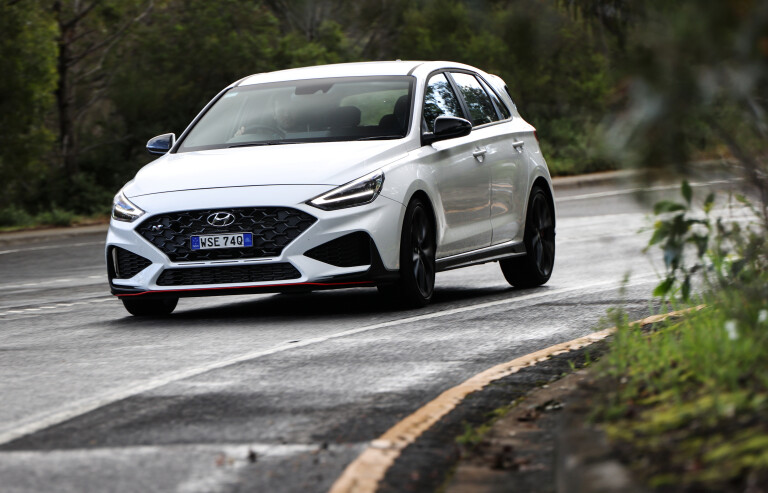
Score breakdown
Things we like
- Outstanding hot hatch dynamics
- Improved engine performance
- Increased specification
Not so much
- Road noise
- Price rise
- Basic interior
Early in his career, Australian cricketing legend Mark Waugh was nicknamed ‘Afghan’, a reference to the 1979 Soviet invasion of Afghanistan referred to as the ‘forgotten war’. It’s a moniker that could equally apply to the 2021 Hyundai i30 N manual.
Just as M Waugh followed in the footsteps of his twin brother Steve (the forgotten Waugh, geddit?), the three-pedal version of the new i30 N has been somewhat lost in the kerfuffle surrounding its dual-clutch sibling.
This is a shame, as there’s a lot more to the updated version of Hyundai’s hot hatch than just a new gearbox. Let’s get the bad news out of the way first: the i30 N is no longer a sub-$40K (before on-roads) bargain, the range now starting at $44,500.

A Premium pack costs an extra $3000 and adds lightweight bucket seats that shed 2.2kg, an Alcantara/leather interior, rain-sensing wipers, front parking sensors, rear privacy glass, heated front seats and steering wheel and an electro-chromatic rear-view mirror. Add another $1500 and you’ll score a panoramic sunroof.
Hyundai has thrown in some extra equipment to help offset the increased price, including standard keyless entry and go, wireless phone charging, a new 10.25-inch infotainment system, blind-spot collision warning, lane following assist and rear cross-traffic alert.
This in addition to existing kit like digital radio, dual-zone climate, smartphone mirroring, all the usual active safety gear (AEB, forward collision assist, lane keep assist). What’s interesting, though, is that unlike the facelifted standard i30, the N has retained its analogue instruments and a manual handbrake. Perfect!
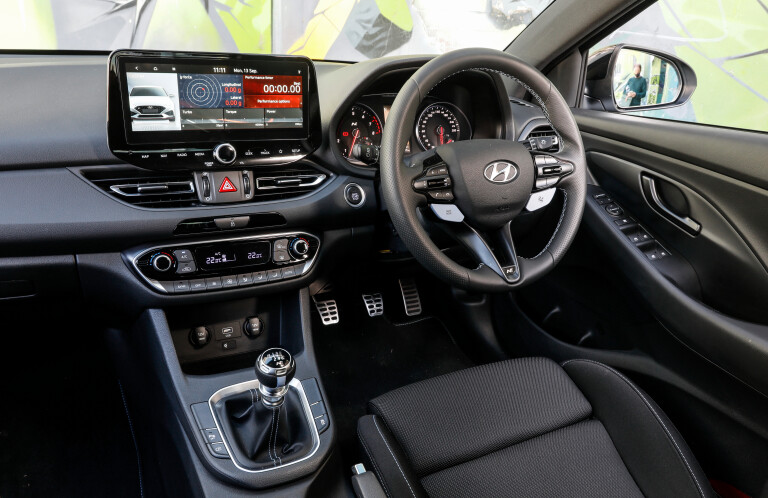
A facelift front and rear has made the i30 look sharper and more aggressive, while the new 19-inch alloys don’t only look great but also save a whopping 14.4kg in unsprung weight thanks to their forged single-piece construction.
It’s one of many detail changes Hyundai has made to improve the performance and handling of its flagship hot hatch. Under the bonnet the 2.0-litre four-cylinder scores a new turbocharger and intercooler setup to produce 206kW at 6000rpm and 392Nm from 2100-4700rpm.
Those figures may only be improvements of 4kW and 39Nm (14Nm if you include the old car’s overboost function) but the changes were intended to offer more power across more of the rev range and they’ve undoubtedly worked.

Mid-range torque is massive – floor the throttle at 3000rpm in second gear and your head will snap back into the headrest and the power doesn’t feel to tail off as sharply above 6000rpm as it did before.
Hyundai claims it’s 0.2sec quicker to 100km/h than before at 5.9sec, but the fact that traction control no longer cuts in with ESP off is likely to be just as much to thank as the extra power. It sounds suitably angry, too, doing its best rally car impersonation with plenty of pops and bangs in the full-wick N mode.
Mid-range torque is massive – floor the throttle at 3000rpm in second gear and your head will snap back into the headrest.
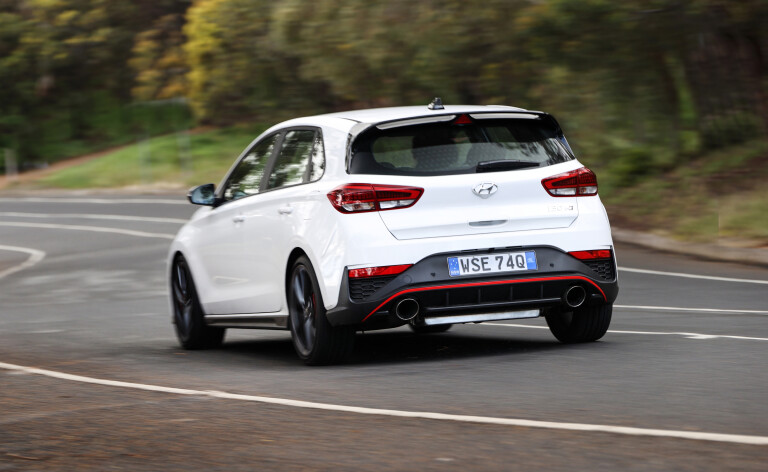
The manual has also been improved. There’s nothing in the press material, but having spent six months with the previous generation car the shift now feels slightly more positive with none of the occasional ‘catching’ between gears that afflicted the old ’box.
As good as the new dual-clutch is, the manual still has a lot of appeal, with spot-on ratios and the option of heel-toeing downshifts yourself or having the computer software do it for you. It works brilliantly, but still feels a bit like cheating.
If anything, the chassis has actually received greater changes than the powertrain. Hyundai’s local suspension team has got its hands dirty once again with revisions to the springs, bushings and damper calibrations, while new geometry includes an increase in front camber from 0.8 to 1.7 degrees.
Combine this with bigger front brakes, the rotors now 360mm instead of 345mm with cooling ducts mounted to the lower control arms, and one of the best-driving hot hatches has become even more entertaining and capable.
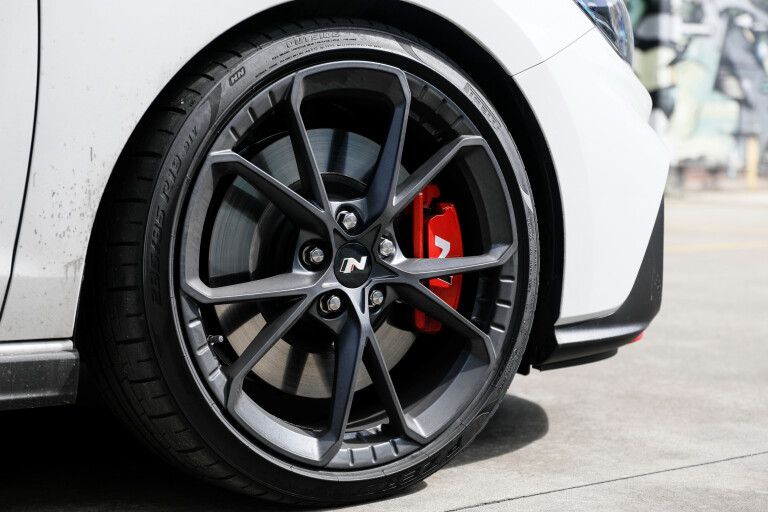
This new i30 N is about as good as this class of car gets. It’s the way the weighty yet communicative steering feeds plenty of information as to how the front tyres are faring under load, the way the aggressive diff actually pulls the nose towards an apex with the application of throttle, the firm, virtually indefatigable brakes, the way the rear moves enough to help the car rotate but without ever sapping driver confidence.
A number of drive modes are available but the easiest avenue is to set up the ‘N Custom’ mode, which is now done via a strange spider’s web type display in the centre screen. At first glance it’s confusing but in practice, it’s quite cool.
This new i30 N is about as good as this class of car gets. It’s the way the weighty steering feeds information, the way the aggressive diff pulls the nose towards an apex, the way the rear helps the car rotate without sapping confidence.
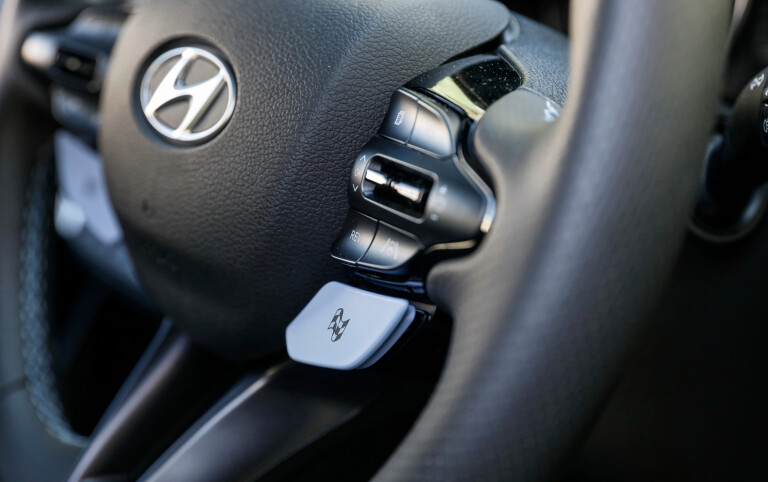
I personally found steering in Normal (Sport adds unnecessary weight), all the drivetrain in maximum attack and dampers in Sport the best bet, though the beauty of a customisable mode is you can find your own favourite combination of settings.
Sport is the best catch-all setting for quick road driving. The dampers can run out of travel through larger compressions but don’t allow the car to lose composure. Sport+ adopts an iron-fist approach to body control but is best restricted to super smooth roads or circuits as it’ll rattle your teeth out over bumps.
Switch back to Comfort and while the i30 N doesn’t quite have the magical compliance of the now-defunct Civic Type R, it still offers a more than acceptable level of ride comfort. Its biggest shortcoming is probably the level of road and tyre noise on certain surfaces, but at slower speeds day-to-day there’s little to complain about.
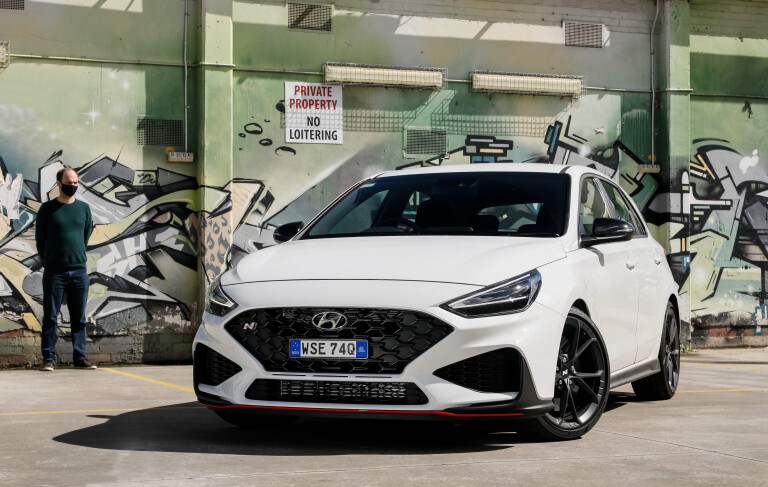
Inside the i30’s basic origins are obvious with plenty of hard, coarse grain plastic on the dash and centre console, but even the standard seats are comfortable and supportive, the 10.25-inch infotainment screen is relatively responsive and easy to navigate and the addition of standard keyless entry/go is very handy.
A highlight is the steering wheel, with helpfully long paddles and a pair of Performance Blue quick select N buttons. It’s a car for drivers, though, with a sparse rear environment offering a pair of air vents but little else.
The extent to which the new i30 N improves on its already impressive predecessor comes as a bit of a surprise. Incremental gains, for sure, but it’s a quicker, sharper, more involving driving tool. Like Mark Waugh, it might be living slightly in the shadow of its more famous sibling, but it’s still one of the all-time greats.
2021 Hyundai i30 N manual specifications
Score breakdown
Things we like
- Outstanding hot hatch dynamics
- Improved engine performance
- Increased specification
Not so much
- Road noise
- Price rise
- Basic interior

COMMENTS